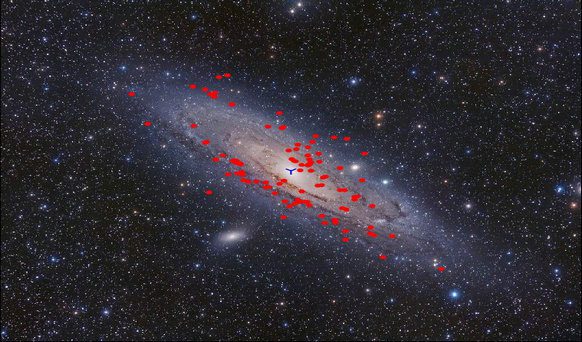Chinese astronomers have recently discovered a record number of small galaxies outside the Milky Way.
With the help of the Large Sky Area Multi-Object Fiber Spectroscopic Telescope (LAMOST), a team of researchers led by the National Astronomical Observatories of the Chinese Academy of Sciences has identified 1,417 new small galaxies, nearly doubling the previously known number of galaxies.

Chinese astronomers have recently discovered a record number of small galaxies outside the Milky Way. (Image: phys.org)
Research team leader Luo Ali stated that the previous record for the number of small galaxies discovered was 800.
Beyond the quantity, this study has drawn media attention because the newly discovered galaxies have been named after various fruits and vegetables, primarily based on their colors and shapes. Team leader Luo Ali mentioned that 739 galaxies have been named Green Pea, 270 Blueberry, and 388 Purple Grape.
Located approximately 1.5 to 5 billion light-years away, the Green Pea galaxies are less than one-tenth the size and less than one percent the mass of the Milky Way, yet they exhibit a star formation rate that is about ten times higher than that of our galaxy.
Liu Siqi, a member of the research team, noted that such an impressive star formation rate is typically observed in the early universe and is quite rare today. This member believes that studying Green Pea galaxies will provide new insights into the formation and evolution of galaxies in the early universe.
The Blueberry galaxy is the closest to Earth and is smaller than the Green Pea galaxy, while the Purple Grape galaxy is located somewhere between the two or even farther than the Green Pea galaxy. Some Chinese media outlets have referred to this discovery as a “garden of fruits and vegetables” of galaxies.
The research has been published in the journal The Astrophysical Journal.


















































